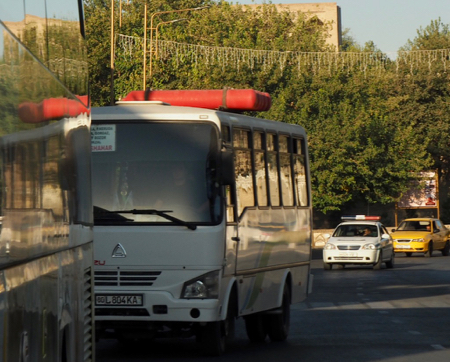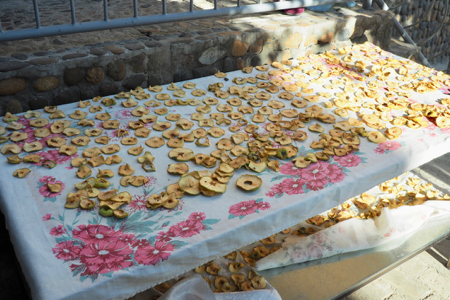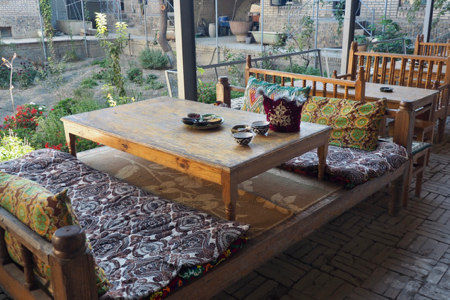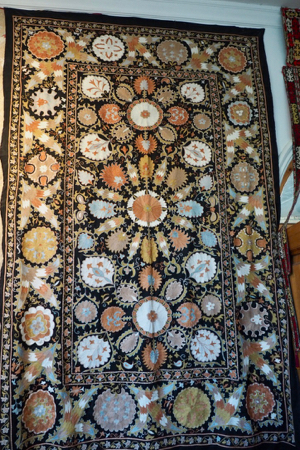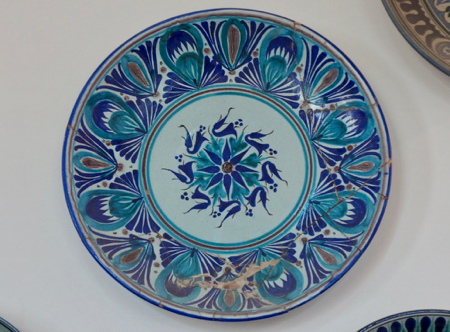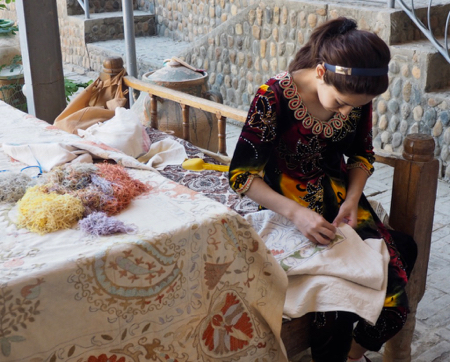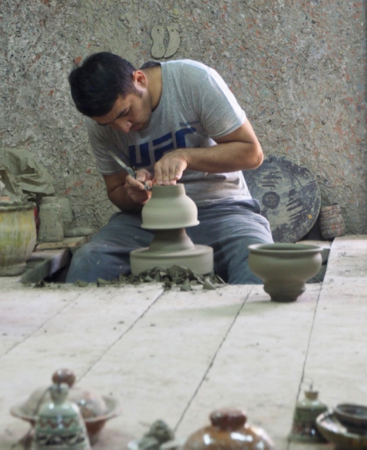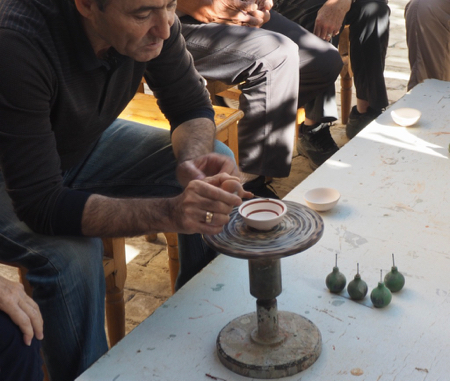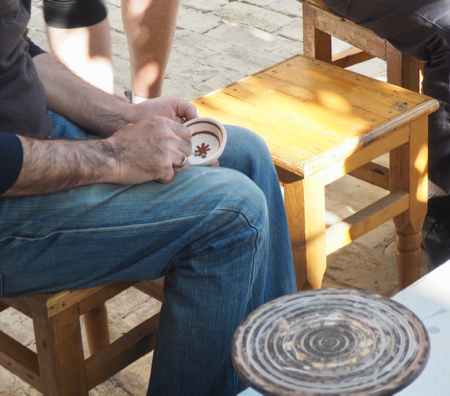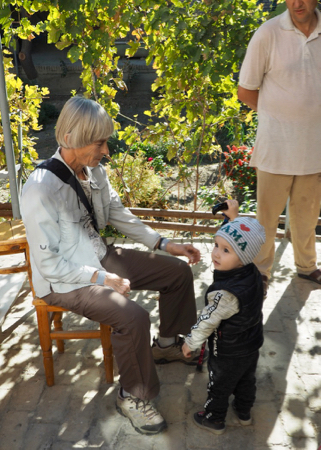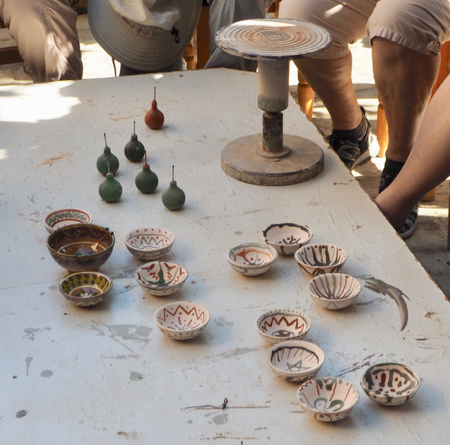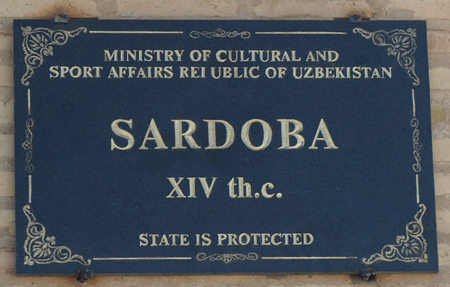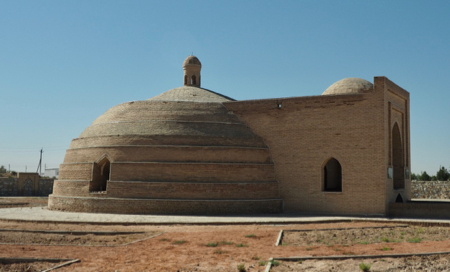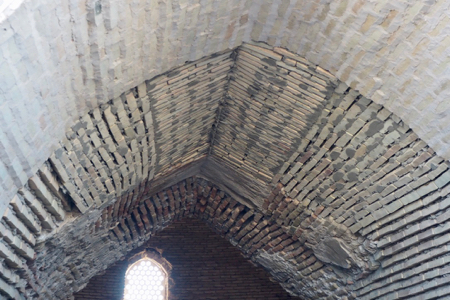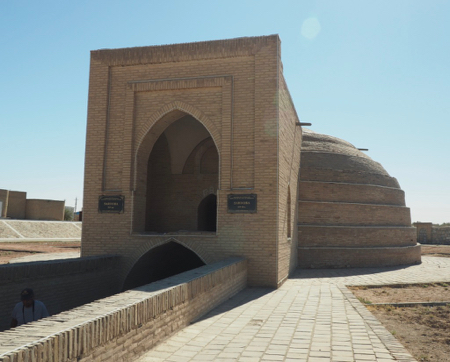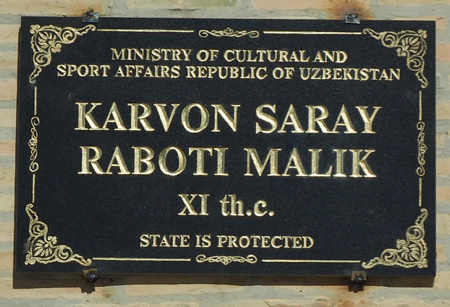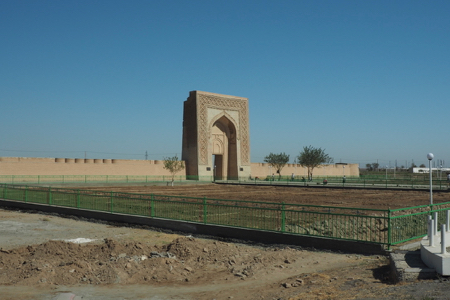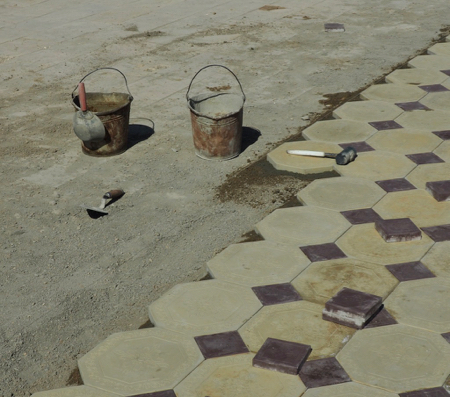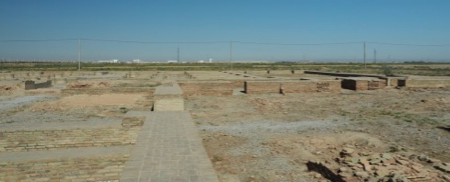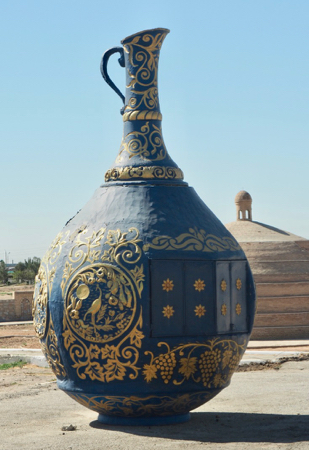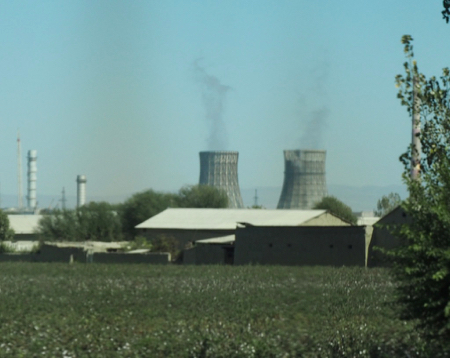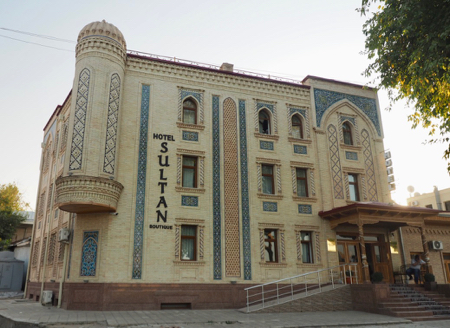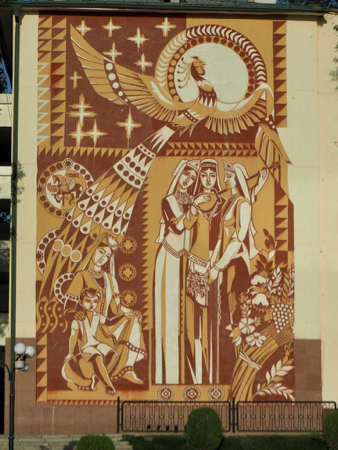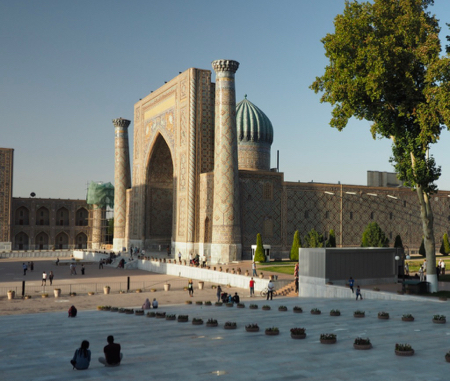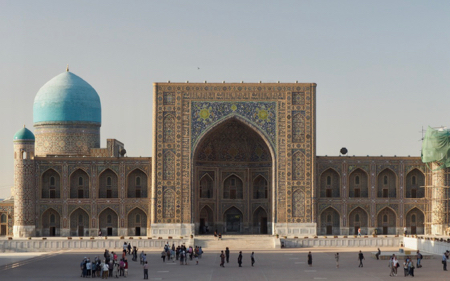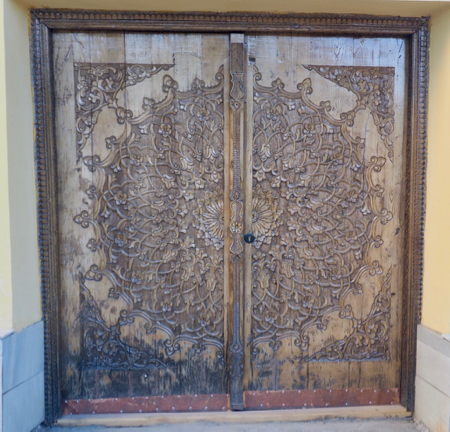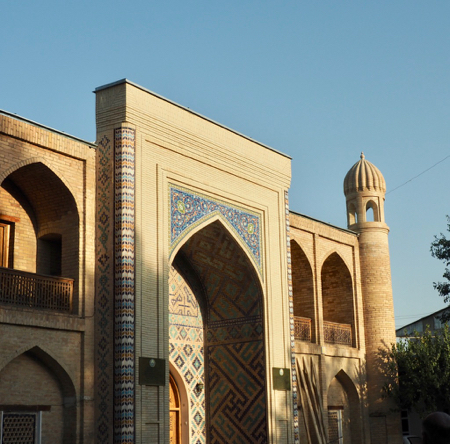Wed., 10/3/18 - Bukhara to Samarkand
Today was another long BUMPY bus trip - only 173 miles but that takes forever on these roads driving about 35mph. We drove across the steppes all day. The brush is all that changed. The term steppe refers to a barren flat area of soil, not sand. If watered, things will grow on the steppes. The communist row houses and “single” houses have not changed. The crops are the same cotton and winter wheat but we saw two small fields of sunflowers. At least we have a couple of planned stops along the way to break up the long drive.
Love these brooms
Sports Facility on the way out of Bukhara
They use propane powered busses in Bukhara
Propane tanks on top of the bus
Our first stop was at the ceramic and embroidery factory of Gijduvan. For eight generations the men have made copies of ancient designs on bowls and plates and the women did the same with hook and needle embroidery. They make a lot of Suzanis, which are long silk or cotton runners for tables and doors.
The group got to design and paint small bowls.
Drying apple slices
Divans for socializing and eating
Beautiful carpet
Embroidery
Potting
Showing us how
Our turn
Another cute kid
Gale trying to charm the kid
The contest entries
Our next stop featured both a cistern and a caravansary (or caravanserai).
On one side of the road is a brick Sardoba or water dome (cistern). These not only collected ground water where there was no natural spring, they also contained a filtering system made of brick, felt, and charcoal. This area is currently being developed by Uzbekistan and South Korea for heavy industry. There is an international airport, a coal and gas energy plant, and both underground and river water available.
Sardoba or cistern
Water in the bottom
Interesting brickwork
Entrance to the Sardoba
Across the road is the caravansary of Raboti Malik that is being restored. The entrance gate is made of thin, square bricks with early examples of the eight-pointed star. It is thought this place had 150 rooms and 7 courtyards. The center courtyard has a raised platform used either for auctions or to more easily load or unload the camels. The Silk Road had many different routes but all had caravansaries like this one on the Central Asian steppes. The early commodities traded were dried fruits and nuts, then minerals, then slaves.
Raboti Malik
Restoration in progress
Note the 8-pointed star
Ruins of the rooms within the walls of the caravansary
Ruins
Large decorative jug at the site
Power plant - Not nuclear
Two forms of transportation
Looks like cabbage
Greenhouses
We arrived a little early in Samarkand, checked into the Sultan Boutique Hotel, and were able to take an orientation walk down to Registan Square. Originally the square was lined with caravansaries and markets. Now it has three madrassas with beautiful tile work.
We have the second floor room with the closet in the turret
Rukhabad Mausoleum - across from our hotel
Guarding a park
On the side of a wall
Our first look at the Registan (a different link), probably the main attraction in Samarkand because of its historic buildings with wonderful tile work.
Sher-Dor Madrasah
Tilya Kori Madrasah
Carved door
Side of Sher-Dor Madrasah
| Return to Top | Return to Itinerary | Return to Trips page to view other trips | Return to Dreamcatcher Home Page |


